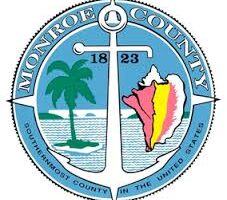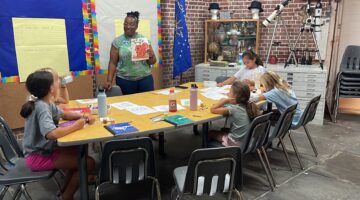Irma wipes out dreams across independent-minded Florida Keys
BIG PINE KEY, Fla. (AP) — Tim Stanton emerged from his ruined workshop off Highway 1 on Big Pine Key and collapsed to the ground, his sunburned, tear-covered face contorted in anguish.
The skeleton-thin 58-year-old with long, stringy gray hair sat under an old gas station awning, overcome by his personal loss in this idyllic place that was one of the hardest hit by Hurricane Irma. A tree fell on the trailer where he lives, and his shop was destroyed, along with an old BMW convertible he had just bought with saved money.
Like many people who drop out of more traditional lives to come to the Keys and forge their own path, Stanton moved here eight years ago from Pennsylvania with plans to cobble together a living based on his own ideas and entrepreneurship. First he sold fresh-pressed lime and sugarcane drinks on the roadside, then gained a local name for crafting ukuleles out of old cigar boxes and worked in a fruit grove. He managed to stitch together an income in one of the nation’s most expensive places and was just getting by when Irma roared into town.
“It’s great here if you’re rich, but for the rest of us it’s a struggle,” said a sobbing Stanton, who goes by the nickname “Ukulele Tim.” Now “it’s going to be a while before it’s paradise again. I had just scraped up enough to buy a car. Destroyed.”
Those who live here know the bargain: turquoise waters and powdery sand but also hurricanes. Still, locals consider themselves hardy souls who are willing to gamble on escaping a direct hit. The last hurricane to make landfall here was Charley in 2004. Irma destroyed at least 25 percent of homes on the Keys, according to FEMA, and badly damaged systems for delivering water and electricity.
The storm’s savagery assaults the senses. The sour, fishy stench of seaweed thrown ashore by Irma fills the air. The main road is dotted with dead iguanas smashed by work trucks and first responders. Sirens wail constantly from emergency crews racing from one end of the Keys to the next. All around is debris and ruin.
For Stanton and other residents, the reality of the task before them is starting to take root. And it’s too much to bear.
“I feel so beat now. It’s just insult to injury,” he said.
Across the road from Stanton’s shop, homes and trailers are toppled. Electricity is out, and a boil-water notice is in effect. A mobile cellphone tower was erected Thursday, bringing the first communications for some who had been cut off from their families since the storm.
Patrick Garvey drove into the neighborhood, his car full of meals-ready-to-eat and cases of water from a distribution hub run by the Florida National Guard nearby. He sent his wife and twin daughters to Brazil to be with family and stayed on Big Pine during the storm.
Like Stanton, Garvey gave up his previous life to come to Big Pine Key and forge his own path, inspired by famous Keys iconoclasts like Ernest Hemingway and treasure hunter Mel Fisher, who reflected the islands’ live-by-your-own-rules mentality. He bought the Keys’ only tropical fruit grove and spent six years lovingly restoring and replanting it.
The 41-year-old former Department of Children and Families employee drained his retirement savings and put everything into the grove. He had help from Stanton, who worked there part-time, and others in the small community. He had started getting customers for his unusual, locally grown tropical fruits like the Abiu, lychee, durian and others cultivated nowhere else in the U.S.
“There’s a pioneering spirit in the Keys. It’s going against the grain,” Garvey said.
On Thursday, his footsteps made a crunching sound from the dry, dead vegetation of his once-thriving enterprise called The Grimal Grove. The trees, some planted decades ago by an experimental grower named Adolf Grimal, had been bowled over by the storm or were killed by the saltwater storm surge.
“I don’t have anything now,” Garvey said looking around. He had been sleeping outside since the storm and was wrestling mentally with whether he could start again. He had been scraping by before the storm, but was able to live cheaply in the neighborhood of trailers and mobile homes that was now laid to waste.
“Affordable housing here is trailers. And if you lose your trailer, you can’t put another one on the lot, according to the local building code. They were grandfathered in,” Garvey said. “It’s tough for the working class. There’s a high cost of living, but low wages.”
Garvey hopped in his car and drove across the street to offer food and water to Stanton and some others who stuck the storm out.
Many neighbors fled Big Pine and the Keys to go north, and residents still were not being let back in until the water system and electricity could be at least partially restored. At a checkpoint near Lower Matecumbe Key, an officer said Thursday that every fourth or fifth car was someone trying to get back in, and they were all being turned away.
With the hot sun burning and the air thick with humidity, the two men looked at each other with sadness as they discussed everything they lost. They hope FEMA and others will come through for them and allow their businesses and homes to be rebuilt.
Garvey said he would try to restore the grove, hoping the community that rallied behind him to help get it started will do so again.
For Stanton, rebuilding seemed a dream as faded as his once-idyllic Keys.
“I’m not a lucky guy, and chances are I’m not going to qualify for all that FEMA aid and stuff. And at least before when things went (bad), I could go to the little grove across the street. It was a little slice of heaven,” he said through tears.
___
Follow Jason Dearen on Twitter: http://www.twitter.com/JHDearen
___
Video links:
After Irma: A Keys resident surveys the damage
___
After Irma: Keys residents contend with the storm’s aftermath






No Comment